“It has the personality not of a particular movie but of a product, of something arrived at by corporate decision.” — Vincent Canby, The New York Times
Blockbuster. Juggernaut. Game Changer.
The event, or tentpole, film was taken to new heights during the summer of 1989, and the industry hasn’t been the same since. Sure, there were hits — and megahits — before, but everything this did was new, unorthodox or amplified: mass-saturation marketing, title-less posters, narration-less trailers, loads of tie-in merchandise, dual soundtrack release, one-day-early sneak-preview screenings, anti-piracy electronic-coded release prints, shattered box-office records, home-video release while still in theaters, franchise. [Read on here…]
The Digital Bits is pleased to present this retrospective commemorating the silver anniversary of the release of Batman, Tim Burton’s take on the Caped Crusader starring Michael Keaton as the Dark Knight and Jack Nicholson as the Joker. As with other entries in this series, The Bits celebrates the occasion with this retrospective article featuring two interviews (one with film historian and author Bruce Scivally who discusses the legacy of the film and character, and the other with film music authority Jeff Bond who discusses one of the stand-out elements of the film: Danny Elfman’s music).
The article also includes some quotes from well-known movie critics, production & exhibition information, a list of the movie’s deluxe 70-millimeter presentations, and a revealing compilation of box-office data that places the movie’s performance in context.

BATMAN NUMBER$
- 1 = Rank among top-grossing movies during opening weekend
- 1 = Rank among top-grossing movies of 1989 (summer season)
- 1 = Rank among top-grossing movies of 1989 (domestic)
- 1 = Rank among Warner Bros.’ top-grossing movies of all time at close of run
- 2 = Number of weeks nation’s top-grossing movie
- 2 = Rank among top-grossing movies of 1989 (worldwide)
- 3 = Rank among top-grossing movies of the 1980s
- 5 = Number of months between theatrical release and home-video release
- 5 = Rank on all-time list of top-grossing movies at close of original run
- 10 = Number of days to gross $100 million*
- 12 = Number of years Warner Bros.’ top-grossing movie
- 13 = Number of years industry’s top-grossing superhero/comic book movie
- 25.7 = Percentage of second-week decrease in box-office gross
- 37 = Number of days to gross $200 million*
- 50 = Rank on current list of all-time top-grossing movies (domestic, adjusted for inflation)
- 81 = Rank on current list of all-time top-grossing movies (domestic)
- 179 = Rank on current list of all-time top-grossing movies (worldwide)
- 2,194 = Number of theaters showing the movie during opening weekend
- 13,500,000 = Number of home-video units sold to retailers on initial release (sell-through, $24.98 SRP)
- $2.2 million = Sneak-preview screenings box-office gross*
- $13.1 million = Opening-day box-office gross*
- $14.6 million = Highest single-day gross (June 24)*
- $40.5 million = Opening weekend box-office gross* (June 23-25)
- $42.7 million = Opening weekend box-office gross* (June 22 sneak previews + June 23-25)
- $53.5 million = Production cost
- $71.8 million = International box-office rental (% of gross exhibitors paid to distributor)
- $102.3 million = Production cost (adjusted for inflation)
- $152.1 million = Domestic box-office rental (% of gross exhibitors paid to distributor)
- $160.2 million = International box-office gross
- $251.2 million = Domestic box-office gross
- $400.0 million = Home video and ancillary market revenue (approximate)
- $411.3 million = Worldwide box-office gross
- $501.1 million = Domestic box-office gross (adjusted for inflation)
- $750.0 million = Tie-in merchandise revenue (approximate)
- $786.4 million = Worldwide box-office gross (adjusted for inflation)
*Established new industry record

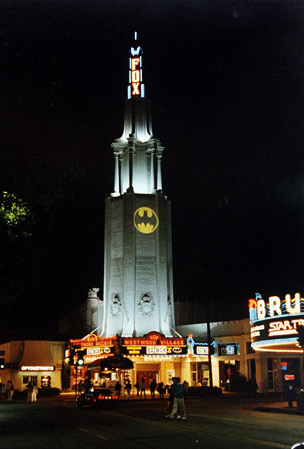
A SAMPLING OF MOVIE REVIEWER QUOTES
“The movie of the decade.” — Erik Preminger, KGO-TV, San Francisco
“The Gotham City created in Batman is one of the most distinctive and atmospheric places I’ve seen in the movies. It’s a shame something more memorable doesn’t happen there. Batman is a triumph of design over story, style over substance — a great-looking movie with a plot you can’t care much about.” — Roger Ebert, Chicago Sun-Times
“…the best of the summer blockbusters because of its originality. Director Tim Burton does not kowtow to the juvenile sensibility of most summertime movies, and the result is a dark, smart and moody drama filled with more than a few laughs provided by Jack Nicholson as the evil Joker.” — Gene Siskel, Chicago Tribune
“The problem — I think — is that while Burton is a great visual stylist, intellectually, he’s as arrested as Pee-wee Herman. Burton’s more interested in fetishistic behavior and surreal/sadistic imagery than he is in ‘girls’ or anything as dull as character development.” — James Verniere, Boston Herald
“Dark, haunting and poetic, Tim Burton’s Batman is a magnificent living comic book. From its opening shots, as the camera descends into the grim, teeming streets of Gotham City, the movie fixes you in its gravitational pull. It’s an enveloping, walk-in vision. You enter into it as you would a magical forest in a fairy tale, and the deeper you’re drawn into it, the more frighteningly vivid it becomes. Ultimately, that’s what Batman is — a violent, urban fairy tale. And it’s as rich and satisfying a movie as you’re likely to see all year.” — Hal Hinson, The Washington Post
“The much-publicized Prince songs are terrible and rather intrusive, but Danny Elfman’s score is as flamboyant and huge as the movie, perfectly complementing the action. And the sets and technical credits are fascinating from beginning to end.” — Chris Hicks, (Salt Lake City) Deseret News
“It comes as no surprise that Jack Nicholson steals every scene in a sizable role as the hideously disfigured Joker. Nicholson embellishes fascinatingly baroque designs with his twisted features, lavish verbal pirouettes and inspired excursions into the outer limits of psychosis. It’s a masterpiece of sinister comic acting.” — Variety
”Well, bat-fans, your days and nights and weeks and months of anticipation and dread have come down to this very day — Batman is playing in theaters. And unlike all the megabuck sequels of the summer, Batman lives up to its billing. It’s original, wild, daring, funny, frightening and unexpected — everything a great film of this sort should be.” — Donald Porter, (Ogden) Standard-Examiner
“Some things are wanted too badly. Case in point: the Batman movie. Could anything satisfy the unprecedented anticipation this film stirred up? The answer, of course, is no. A different kind of want develops while you’re watching. Marveling at its audacious, eclectic design, Jack Nicholson’s certifiably crazed Joker, appreciating Michael Keaton’s efforts to bring dignity and wit to the Dark Knight and his alter ego, Bruce Wayne — for that and more, you want to love it, but you can’t. Batman is one of those films that gets everything right except the script. The core failure undercuts all that the movie does well. But what Batman does well, especially in this summer of risk-free, unimaginative sequels, is worth celebrating.” — Bob Strauss, Los Angeles Daily News
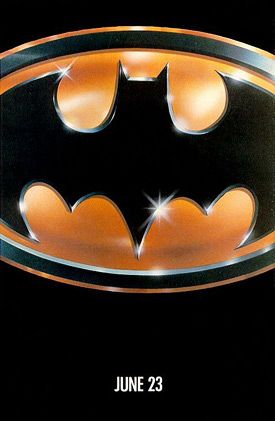 “A triumph. You can’t take your eyes off it. Michael Keaton is astounding. Jack Nicholson paints a classic comic portrait. Tim Burton is a gifted director.” — Peter Travers, Rolling Stone
“A triumph. You can’t take your eyes off it. Michael Keaton is astounding. Jack Nicholson paints a classic comic portrait. Tim Burton is a gifted director.” — Peter Travers, Rolling Stone
“Anton Furst’s production design is so evocative that one expects to meet a fiend on the order of Dr. Mabuse, Fritz Lang’s master criminal, rather than D.C. Comics’ Joker, who, though brilliantly played by Jack Nicholson, simply isn’t up to the apocalyptic grandeur of the décor…. Thanks to the work of Mr. Furst, Batman is fun to look at, at least for a while. Not since Lang’s Dr. Mabuse: the Gambler (1922), Metropolis (1926) and The Last Will of Dr. Mabuse (1933) have so much talent and money gone into the creation of an expressionistic world so determinedly corrupt…. Yet nothing in the movie sustains this vision. The wit is all pictorial. The film meanders mindlessly from one image to the next, as does a comic book. It doesn’t help that the title character remains such a wimp even when played by Michael Keaton. Nobody could do anything with this ridiculous conceit, but asking Mr. Keaton, one of our most volatile actors, to play Bruce Wayne/Batman is like asking him to put on an ape suit and play the title role in King Kong…. Batman is a movie without any dominant tone or style other than that provided by Mr. Furst. It’s neither funny nor solemn. It has the personality not of a particular movie but of a product, of something arrived at by corporate decision.” — Vincent Canby, The New York Times
“Breathtaking! As played by Jack Nicholson, the Joker is Wild!” — Gene Shalit, The Today Show
“Daring, spectacular, exciting. Worth the wait, worth the hype and worth the wait in line. Michael Keaton makes you believe in Batman.” — Pat Collins, WWOR-TV, New York
“Bad news, batfans. In Batman, the Joker finally gets the better of the hero. He pulls off the crime of the century right below the Caped Crusader’s nose: He steals his movie.” — Jeff Strickler, (Minneapolis) Star Tribune
“Wow! This is easily one of the best movies I’ve ever seen in my life. There was not one minute where I was bored. The lighting was right on the mark, the direction superb and the performances flawless. If you don’t enjoy this flick you are comatose, my friend.” — Larry King, CNN
“Batman’s style is both daunting and lurching; it has trouble deciding which of its antagonists should set the tone. It can be as manic as the Joker, straining to hear the applause of outrage; it can be as implosive as Batman-Bruce, who seems crushed by the burden of his schizoid eminence. This tension nearly exhausts the viewer and the film.” — Richard Corliss, Time
“Yes, the Joker is definitely wild in Batman. Nicholson’s role is so large, in fact, that this film should almost be called The Joker… Considering all of the buildup this film has received, many moviegoers will find it a letdown. If Robin were around, he probably would say, ‘Holy Disappointment, Batman!’” — Jeff Bahr, Omaha World-Herald
“Batman is half brilliant. It looks as if Burton was aware of the flaws in this project but that, handed a big-budget blockbuster after only two movies, he couldn’t blast all of them away, as Richard Donner was able to do in the first Superman. There’s hardly a doubt that Batman will reap zillions. Let’s hope that Tim Burton won’t get caught up in the sequel syndrome. He should pursue his own projects — that’s the real excitement of a talent like his.” — Jack Kroll, Newsweek

PRODUCTION & EXHIBITION INFORMATION + TRIVIA
By the end of its original release, Batman became Warner Bros.’ highest-grossing movie and the industry’s highest-grossing comic book/superhero movie. The movie eclipsed the Warners record set by The Exorcist sixteen years earlier and held as the studio’s top earner until topped by Harry Potter and the Sorcerer’s Stone in 2001. It eclipsed the comic book/superhero record set by Superman eleven years earlier and held as the top-earner until Spider-Man surpassed it in 2002.
Now commonplace with event movies and tentpoles, Batman was the first movie to include nationwide sneak-preview screenings the evening prior to release. Prior to Batman, several high-profile movies—including some James Bond, Star Wars and Indiana Jones sequels, and Cobra—had pre-release screenings (i.e. midnight and/or round-the-clock opening-day screenings) but these were limited to a handful of theaters/cities; Batman appears to have been the first movie to have sneaks on a mass scale.
The world premiere of Batman was held on June 19, 1989, at the Mann Village and Mann Bruin theaters in the Westwood Village community of Los Angeles.
Batman was the first movie to gross over $40 million on an opening weekend.
A new opening-weekend box-office gross record was set three times during a span of a month during the summer movie-going season of 1989. First, Indiana Jones and the Last Crusade established a new record with a May 26-28 gross of $29.4 million, eclipsing the previous record of $26.3 million set in 1987 by Beverly Hills Cop II. Ghostbusters II broke Indiana Jones’ record with a June 16-18 opening weekend tally of $29.5 million. That record lasted a week until Batman arrived and established by a wide margin a new industry record with a June 23-25 opening weekend gross of $40.5 million ($42.7 million including its June 22 sneak-preview screenings). Batman’s record held for three years before being topped by Batman Returns ($45.7 million).
Batman had two separate soundtrack albums issued—an unusual practice at the time—one featuring Danny Elman’s symphonic score and the other featuring Prince’s songs.
Batman was the third feature film of Tim Burton scored by Danny Elfman. Subsequently, Elfman provided the music to every Burton-directed film except Ed Wood (1994). Burton & Elfman are among the most prolific director-composer collaborations.
The first coming attractions trailer for Batman was issued in December 1988 and was initially screened with selected engagements of Tequila Sunrise. Subsequently, the trailer was attached to the prints of some of Warner Bros.’ winter and spring 1989 releases, including Her Alibi and Dead Calm. A newer, more polished trailer was issued with prints of Pink Cadillac. A trailer for Young Einstein was attached to the release prints of Batman.
Batman was among 17 first-run movies and three classic re-issues released during 1989 with 70-millimeter prints for selected engagements. The premium-format prints cost about eight times that of a conventional 35mm print to manufacture but grossed more than the 35mm engagements in most situations. Large-format 70mm was superior to conventional 35mm prints because the larger print allowed a sharper, brighter and steadier projected image and its magnetic soundtrack provided discrete channels of audio with incredible fidelity.
Awards won included an Oscar for Art Direction, a Grammy for Danny Elfman’s music, and a People’s Choice Award for Favorite Motion Picture.
Despite a worldwide box-office gross exceeding $400 million, industry trade publications reported a decade after release that Batman was in the red.
During an era where six months was the average amount of time between theatrical release and home-video release (and even longer for most blockbusters), Batman pushed the theatrical-to-video “window” to under five months by arriving on home-video formats in November 1989, and also marked the first time a summer blockbuster was rush-released to home video in time for Christmas.
The first home-video (VHS & Beta) release of Batman was in 1989. Its first LaserDisc release was in 1990. (It was also released in 8mm and Spanish-subtitled VHS.) The first cable TV/premium-channel broadcast was in July 1990. The first network television broadcast was on CBS on April 29, 1992. Its first DVD release was in 1997. Its first Region 1 Blu-ray release was in 2009 (4-movie anthology set) and 2010 (individual release).

THE 70MM ENGAGEMENTS
The following is a list of the first-run 70mm Six-Track Dolby Stereo premium-format presentations of Batman in the United States and Canada. Arguably, these were the best theaters in which to experience Batman. Less than five percent of the film’s print run was in the deluxe 70mm format. So which theaters received the coveted prints? Read on…. (The list does not include any 70mm move-over, sub-run, re-release or international engagements.)
** shown on two screens
ALBERTA
- Calgary – Famous Players PALLISER SQUARE 1 & 2
- Calgary – Famous Players SOUTHCENTRE 7
- Edmonton – Famous Players WESTMALL 5
BRITISH COLUMBIA
- Burnaby – Famous Players STATION SQUARE 7 <THX>
- Vancouver – Famous Players CAPITOL 6
 CALIFORNIA
CALIFORNIA
- Berkeley – Cinerama CALIFORNIA 3
- Lakewood – Pacific LAKEWOOD CENTER 4
- Los Angeles (Hollywood) – Mann CHINESE TRIPLEX <THX>
- Los Angeles (North Hollywood) – Syufy CENTURY 7 <THX>
- Los Angeles (Westwood Village) – Mann VILLAGE <THX>
- Los Angeles (Woodland Hills) – United Artists WARNER CENTER 6
- Mountain View – Syufy CENTURY 10
- Newport Beach – Edwards NEWPORT CINEMAS
- Oakland – Renaissance Rialto GRAND LAKE 4
- Orange – Syufy CENTURY CINEDOME 8**
- Sacramento – Syufy CENTURY CINEDOME 8
- Sacramento – United Artists ARDEN FAIR MALL 6
- San Diego – Mann 9 AT THE GROVE <THX>
- San Diego – United Artists HORTON PLAZA 7 <THX>
- San Francisco – United Artists CORONET
- San Jose – Syufy CENTURY 21
- San Jose – Syufy CENTURY 22 A-B-C
- San Rafael – Pacific REGENCY 6
- Santa Ana – Edwards HUTTON CENTRE 8 <THX>
- Santa Barbara – Metropolitan ARLINGTON CENTER
- Universal City – Cineplex Odeon UNIVERSAL CITY 18 <THX>
DISTRICT OF COLUMBIA
- Washington – Cineplex Odeon WISCONSIN AVENUE 6 <THX>
- Washington – Kogod-Burka FINE ARTS
GEORGIA
- Atlanta – Cineplex Odeon PHIPPS PLAZA 3
HAWAII
- Honolulu – Consolidated WAIKIKI 3 <HPS-4000>
ILLINOIS
- Calumet City – Cineplex Odeon RIVER OAKS 14
- Chicago – Cineplex Odeon 900 NORTH MICHIGAN TWIN**
- Chicago – General Cinema Corporation FORD CITY 5
- Hillside – Marks & Rosenfield HILLSIDE SQUARE 6
- Norridge – Marks & Rosenfield NORRIDGE 7
- Schaumburg – Cineplex Odeon WOODFIELD 4
KENTUCKY
- Erlanger – National Amusements SHOWCASE CINEMAS**
LOUISIANA
- Metairie – General Cinema Corporation LAKESIDE 5
MANITOBA
- Winnipeg – Famous Players NORTHSTAR I & II
MARYLAND
- Timonium – Loews TIMONIUM 3
MASSACHUSETTS
- Boston – Loews CHERI TRIPLEX
MICHIGAN
- Southfield – American Multi-Cinema AMERICANA 8
MISSOURI
- Richmond Heights – American Multi-Cinema ESQUIRE 3
NEW JERSEY
- Paramus – Cineplex Odeon ROUTE 4 TENPLEX
- Secaucus – Loews MEADOW SIX
NEW YORK
- New York (Manhattan) – City CINEMA 1
- New York (Manhattan) – Loews 84TH STREET SIX
- New York (Manhattan) – United Artists/B.S. Moss CRITERION CENTER
- Valley Stream – National Amusements SUNRISE MULTIPLEX CINEMAS
OHIO
- Cleveland Heights – National Theatre Corporation SEVERANCE MOVIES <THX>
- Columbus – General Cinema Corporation NORTHLAND 8 <THX>
- Springdale – National Amusements SHOWCASE CINEMAS**
- Toledo – National Amusements SHOWCASE CINEMAS
ONTARIO
- Hamilton – Famous Players JACKSON SQUARE 6
- Mississauga – Famous Players SQUARE ONE 4
- Toronto – Famous Players CEDARBRAE 8
- Toronto – Famous Players REGENT
- Toronto – Famous Players UPTOWN 5
- Toronto – Famous Players YORKDALE 6
OREGON
- Portland – Luxury Theatres LLOYD 10 <THX>
QUEBEC
- Montreal – United PALACE 6
- Montreal – United VERSAILLES 6
TEXAS
- Dallas – General Cinema Corporation NORTHPARK 1-2 <THX>
- Houston – General Cinema Corporation GALLERIA 1-2
- San Antonio – Santikos GALAXY 14** <THX>
UTAH
- Holladay – Mann COTTONWOOD MALL 4
VIRGINIA
- Merrifield – National Amusements ARLINGTON BLVD / LEE HWY MULTIPLEX CINEMAS
WASHINGTON
- Bellevue – Cineplex Odeon FACTORIA 8
- Bellevue – Luxury Theatres CROSSROADS 8
- Lynnwood – Luxury Theatres ALDERWOOD 7
- Seattle – Cineplex Odeon OAK TREE 6 <THX>
- Seattle – General Cinema Corporation KING
INTERVIEW #1
Bruce Scivally is the author of Billion Dollar Batman: A History of the Caped Crusader on Film, Radio and Television from 10¢ Comic Book to Global Icon (Henry Gray, 2011). He has also written Superman on Film, Television, Radio & Broadway (McFarland, 2006) and (with John Cork) James Bond: The Legacy (Abrams, 2002) and the forthcoming Dracula FAQ (Hal Leonard Publishing, 2015). As well, he has written and produced numerous documentaries and featurettes that have appeared as supplemental material on LaserDisc, DVD and Blu-ray Disc, including several of the Charlie Chan, James Bond, and Pink Panther releases. He teaches screenwriting, film production and cinema history and theory at The Illinois Institute of Art — Chicago and Columbia College.
The Bits caught up with Bruce to discuss the impact of the 1989 movie and the enduring appeal of the Batman character.
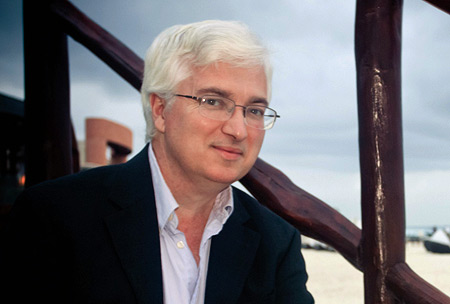 Michael Coate (The Digital Bits): In what way is Batman worthy of celebration on its 25th anniversary?
Michael Coate (The Digital Bits): In what way is Batman worthy of celebration on its 25th anniversary?
Bruce Scivally: Batman was a true movie phenomenon. It was a film that, after taking nearly 10 years to launch, encountered enormous skepticism and criticism while it was in production, but in the months leading up to its release, the newly-designed Batman symbol was seen on posters practically everywhere you looked. By the time it hit theaters, audiences were primed for something special, and the film delivered. It was a totally fresh take on the Batman character, achieving what producer Michael Uslan had hoped for — it made viewers forget the campy Adam West TV series with its “POW! BAM!” pop-art graphics. It also began the trend of superhero’s outfits being almost totally black with muscles sculpted into the uniform. And in the summer of 1989, it was both a box-office and merchandising powerhouse.
Coate: This year also marks the 75th anniversary of the Batman character, dating back to his first appearance in the comic books. Why has the character endured?
Scivally: Batman has endured for the same reason that Superman, James Bond and Madonna have endured — he keeps being reinvented. Every decade or so, a new generation of writers and artists makes changes to the character or his universe to keep him current and up-to-date. In the 40s, Batman was a much cheerier character, trading quips with Robin while they pummeled the bad guys. In the 50s, the stories moved out of Gotham and into the realms of fantasy or sci-fi, with Batman time-traveling, turning into a baby and being annoyed by the inter-dimensional Batmite, while the Batman family expanded to include Batwoman, Batgirl, and Bat-dog. In 1964, the blocky Bob Kane-inspired artwork gave way to the more rounded lines of Carmine Infantino when the “New Look” Batman (with the bat symbol in a yellow oval) premiered, and the ancillary characters and sci-fi storylines were jettisoned to one again ground Batman in Gotham, facing the classic villains, though the tone was still rather campy and kid-oriented. As the 1970s dawned, writer Denny O’Neil returned Batman to his dark roots, sending a grown-up Robin to college, moving Bruce Wayne out of his mansion and into a penthouse, and making Batman more of an international, 007-type character. In the 1980s, writer/artist Frank Miller debuted The Dark Knight Returns, a Batman story geared for what was fast becoming a more adult comic book market, with the comics themselves now being called “graphic novels.” Miller’s take on the character has endured, reflecting the uncertainty of modern times. But through all of these incarnations, Batman has remained, at his core, a character motivated by revenge, a human impulse so primal that it is at the core of almost every action film ever made.
Coate: What was the objective with your Batman book?
Scivally: When I went around to comic book conventions promoting Superman on Film, Television, Radio and Broadway, people kept asking, “When are you going to write a book about Batman?” I thought it would take about a year to do so, but it was more than two years of research and before I was finally able to complete it. The objective was to chart the evolution of Batman in popular media, with the differences in his portrayals from his first comic book appearances to the serials, his appearances on the Superman radio show, the iconic 1960s TV series (inspired by the “new look” of the Batman comics), the films of the 1980s and 90s (inspired first by Frank Miller’s The Dark Knight Returns and then by the studio’s response to the negative reaction of kids creeped out by Batman Returns), and the Christopher Nolan films (which were inspired by the 007 films).
 Coate: How is Batman significant within the comic book/superhero genre?
Coate: How is Batman significant within the comic book/superhero genre?
Scivally: Although Batman began as Bob Kane’s idea for riding on the coattails of Superman’s comic book success, as developed by Kane and writer Bill Finger (who is the unsung hero who contributed much to the character but never received the same credit or notoriety as Kane), Batman was a totally different style of hero. Batman didn’t come from another planet or get his powers from a wizard or magic lantern or special ring — he was just a regular guy, albeit an insanely rich one, who developed his mind and body to perfection to fight crime. And, unlike Superman, whose aims were selfless and altruistic and who represents goodness and hope and the best that we have within us, Batman is on a mission of vengeance, avenging the deaths of his parents by punishing all criminals; there’s a darkness and bitterness in his soul that often skates dangerously close to representing the worst of what we have inside us. As I said in the preface to my book, Superman represents who we aspire to be, while Batman represents who we are. Besides that, a hero is only as good as the villains he opposes, and Batman always had the coolest villains, with Dick Tracy a close second.
Coate: Were you a fan of the Batman character prior to seeing the 1989 movie?
Scivally: Honestly, I’ve always been more of a Superman fan, and my brother is more of a Batman fan. But I was about five years old when the Batman TV show premiered in 1966, which is the perfect age for it. For the next couple of years, I was totally enamored of Batman, and when I got a bit older, I began buying the Batman comics (along with all kinds of other comics). This was the early 70s, when Denny O’Neil revamped the character by sending Robin off to college and moving Batman into a penthouse apartment and making him more of an international adventurer — the first attempt at “James Bond-izing” Batman.
Coate: What was your reaction to the first time you saw the 1989 Batman movie?
Scivally: I first saw the movie under special and unusual circumstances. At the time, I was working for a talent agency in Beverly Hills, and when I learned that the premiere was going to be in Westwood, near UCLA, I called up an old friend of mine and we decided to try and “crash” the premiere. So, as soon as we were off work, we went to Westwood and joined the crowds congregating around the theater. The helium balloons from the film’s finale were hovering over the street and there were fans in the crowd in costume as Batman, Robin and the Joker, so there was a festive mood. We saw the limousines drive up and deposit the stars at the red carpet; I remember Jack Nicholson just nodded and waved at the fans and walked on in, but Michael Keaton did a little helicopter spin with his arms out slapping the hands of several fans before he went inside. Then word filtered through the crowd that there would be a second screening after the premiere for all the fans waiting outside, so we waited. Sure enough, when the premiere was over, we were allowed into the theater. As we took our seats, a spotlight shone a Batsignal onto the theater curtain. After everyone was inside, the lights dimmed, the curtains parted, and in a theater where the air was electric with anticipation, the film began. Now, it would be difficult for ANY film to live up to that level of hype, but it started out strongly. When Batman first appeared, floating down in the background as two criminals were talking in the foreground, there was an audible “Oooooh!” in the audience. The following scenes of the Joker’s origin also played well. But as the film went along, I felt the plot kind of went off the rails, and by the time it got to the ending, with the Joker pulling an extremely long-barreled pistol out of his pants and shooting the Batplane out of the sky, I felt it had reached a level of silliness even beyond the campiness of the TV series. So, I left the theater with mixed feelings, a little disappointed. I liked the mood established earlier in the film, but felt that Tim Burton’s penchant for “quirkiness” sabotaged that mood in the final half, too often going for the cheap laugh. And I felt the Joker’s plot wasn’t explained very clearly. In many regards, it was a better film than I had expected, but ultimately it didn’t live up to the promise of its first half.
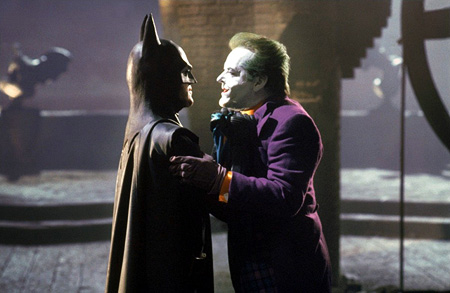
Coate: Can you compare and contrast Michael Keaton’s performance with that of other actors who have portrayed the character of Batman?
Scivally: When Keaton was cast, there was an uproar in the fan community — “Mr. Mom” as Batman? But Tim Burton’s conception was that he wanted an “everyman” in the role, not a square-jawed, muscle-bound bodybuilder type (in Burton’s view, if someone were that great a physical specimen, why would they need the Batsuit?). Burton also felt Bruce Wayne was a little psychotic, and since the cowl would accentuate an actor’s eyes, he wanted an actor whose eyes expressed a restlessness and craziness. Having just worked with Michael Keaton on Beetlejuice, and feeling that Keaton possessed those qualities, he hired him. While I was one of those who looked askance at that choice, when I saw the film I thought he was quite good at contrasting Batman’s vengefulness with Bruce Wayne’s low-key emotional vulnerability and obsessiveness. His Bruce Wayne was even more brooding in Batman Returns. Certainly, his was a more psychologically complex performance than that of Adam West before him, but West’s performance was pitch-perfect for the campy tone of the TV series. As for the actors who came after Keaton, while Val Kilmer and George Clooney had better physiques, their performances lacked Keaton’s depth, though Kilmer was quite good and Clooney had potential but was hampered by an inadequate script. And Christian Bale’s films were a different concept entirely, with more focus on Bruce Wayne and placing Batman in more of a “real world” versus “fantasy world” environment, so his was a different interpretation...with a too-easily-ridiculed gravelly-voiced Batman.
Coate: Can you compare and contrast Jack Nicholson’s performance with that of other actors who have portrayed the character of the Joker?
Scivally: Cesar Romero was my first live-action Joker, and I loved his performance, even though you could see his trademark mustache under the white make-up. When Nicholson was cast as the Joker, the consensus in Hollywood was that it was a real coup, and it was in the sense that it lent credibility to the project in the same way that casting Brando in Superman marked that film as a “serious” endeavor. But I feel that Nicholson so often played over-the-top characters that his Joker was little more than The Shining’s Jack Torrance in clownface. It wasn’t so much The Joker we saw on-screen as Jack doing his “Jack” thing. And physically speaking, Nicholson was too pudgy to match the tall, gangly concept of the Joker from the comic books, so while I’ve enjoyed Nicholson in other films, I’m not a huge fan of his Joker. Heath Ledger’s performance was mesmerizing, as a real certifiable nut-job, but while he embodied the spirit of the Joker of the comics, his kinetic, straggly-haired, sweating and swaggering Joker at times came off as a drug addict on a very, very bad trip.
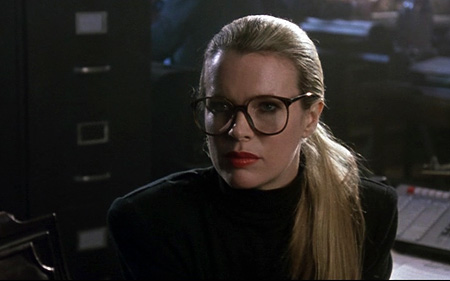
Coate: What did Burton’s Batman do well that previous incarnations, sequels, imitations and reboots have not?
Scivally: Tim Burton’s movies have always been long on style and short on substance, and his Batman films are no exception. The 1989 Batman, with Anton Furst’s production design, did a terrific job of creating an alternate world for Batman to exist within, one that seems slightly futuristic and, at the same time, anachronistic, with the fedora-wearing detectives and mobsters looking like they’ve just stepped out of a 1930s Warner Bros. crime thriller. Coupled with Danny Elfman’s score, the film sets a mood, particularly in the early scenes, of mystery and menace. The sequel was even darker, prompting nightmares in small children that led the studio to insist that the next installments be more kid-friendly, so that we got the silliness of neon-covered machine guns and the Batmobile chasing villains across gigantic statues. When Christopher Nolan rebooted the series with Batman Begins, he sought to situate Batman in the real world, though his “real world” is more like the “five minutes into the future” setting of most 007 films.
Coate: Where does Batman rank among director Tim Burton’s body of work?
Scivally: I would rank Batman highly among Tim Burton films, though it’s one of his least personal works; personally, I think his best film is Edward Scissorhands. But after the low-budget fun of Pee-wee’s Big Adventure and the quirky weirdness of Beetlejuice, Batman proved that Burton could handle a mega-budget film and still give it some of his trademark visual flair, so in that regard it’s the film that legitimized him as a commercial filmmaker in Hollywood.
Coate: What is the legacy of Batman?
Scivally: Along with Superman, Batman is a character who influenced all the comic book heroes who came after him. And perhaps his biggest legacy is that the Batman comics introduced the notion of the kid sidekick, the character who was supposed to be the adolescent reader’s avatar in the comics. But really, didn’t those early comic creators understand that when kids imagine themselves as their favorite comic book characters, they want to be the hero, not the sidekick?
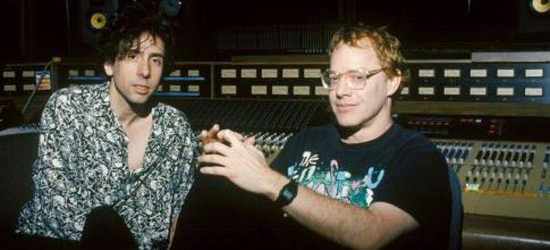
INTERVIEW #2
Jeff Bond is the author of Danse Macabre: 25 Years of Danny Elfman and Tim Burton (included in The Danny Elfman & Tim Burton 25th Anniversary Music Box, Warner Bros., 2011). Jeff currently is the executive editor of Geek Magazine. For several years he covered film music for The Hollywood Reporter and has contributed liner notes to numerous CD soundtrack releases. His other books include The Music of Star Trek (Lone Eagle, 1999) and (with Joe Fordham) the forthcoming Planet of the Apes: The Evolution of the Legendary Franchise (Titan, 2014).
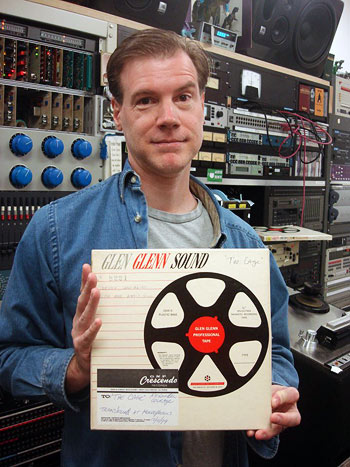 The Bits caught up with Jeff to discuss the impact and appeal of Danny Elfman’s Batman score.
The Bits caught up with Jeff to discuss the impact and appeal of Danny Elfman’s Batman score.
Michael Coate (The Digital Bits): In what way is Danny Elfman’s Batman music worth celebrating on the silver anniversary of its release?
Jeff Bond: This is one of the great orchestral film scores of all time, in terms of its impact both in the movie and to the general public. Danny Elfman was basically regarded as an anomaly and just a quirky cartoon/comedy composer until he did Batman—after that he became THE A-list composer of his era and he is still probably the most imitated film composer apart from Bernard Herrmann (who Danny has admittedly imitated many times).
Coate: Burton & Elfman are among the most prolific and celebrated director/composer collaborations the industry has seen. Why are Burton/Elfman a good combination?
Bond: They share a sensibility — at its core Elfman’s music reflects Burton’s vision, which is soulful, eccentric and quirky, playful, and just strange. The music Elfman writes for the Burton films is really straight from Elfman’s personal musical voice — he has the ability to work in many styles and evoke many styles and eras of music, but I think when he writes for Burton he’s just himself, and that evokes Burton’s mentality and his visual world perfectly.
Coate: What are the highlight pieces of music from Elfman’s Batman score?
Bond: Apart from the fantastic opening title music, which immediately heralded Danny Elfman as a major new, “serious” film composer, there are some early action set pieces — the long piece at the factory that ends with the Joker being created, with that wonderful, muscular, repeating figure running all through it, and especially the music for Batman’s drive to the Batcave with Kim Basinger in the car — that Holst/Stravinsky-like choral chanting and the feeling of velocity — Descent into Mystery. Those are both signature, iconic cues that Elfman now plays in his Burton concert suites and they are just incredibly exciting pieces of film music. But I love the whole score — it really creates an incredible world of its own.
Coate: Where does Batman rank among Elfman’s body of work?
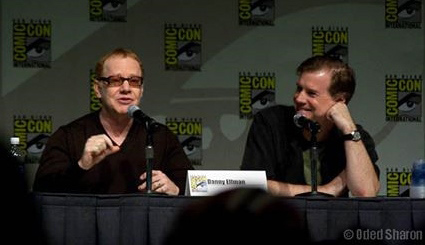
Bond: Elfman has said it is still the hardest score he ever had to write — it’s the biggest hurdle he ever jumped in his career. It put him on an entirely new plane, so I think you would have to rank it in the top five pieces of film scoring that Elfman ever did. Certainly it’s one of the scores most embraced by the public.
Coate: Why is Elfman a popular composer?
Bond: He just exploded onto the film scoring scene with a unique, distinctive sound that was both familiar because of what Danny absorbed and worshipped himself from the grand traditions of film scoring, and completely different because of Elfman’s own personality and background. He came from kind of a cross between a rock band background and a theatrical background, and you hear that in his work — the theatricality. He’s a born showman.
Coate: What is the legacy of Elfman’s contribution to Batman?
Bond: You can hear Danny Elfman’s Batman score, to this day, at least in the corners of the comic book film scores being written. For years that sound was THE sound of the comic book movie and it was ripped off by everyone. There had been no model for those kinds of films before that, apart from John Williams’ Superman, which was this very bright, almost patriotic work — so Danny invented the “dark” superhero sound, and we still hear echoes of that to this day.

PRINCIPAL CAST & CREW:
- Batman / Bruce Wayne – Michael Keaton
- Joker / Jack Napier – Jack Nicholson
- Vicki Vale – Kim Basinger
- Alexander Knox – Robert Wuhl
- Commissioner Gordon – Pat Hingle
- Harvey Dent – Billy Dee Williams
- Alfred – Michael Gough
- Grissom – Jack Palance
- Director – Tim Burton
- Producers – Jon Peters and Peter Guber
- Screenplay – Sam Hamm and Warren Skaaren
- Story – Sam Hamm
- Co-Producer – Chris Kenny
- Executive Producers – Benjamin Melniker and Michael E. Uslan
- Director of Photography – Roger Pratt, BSC
- Production Designer – Anton Furst
- Editor – Ray Lovejoy
- Songs – Prince
- Music – Danny Elfman
- Costume Designer – Bob Ringwood (and Linda Henrikson)
- Casting – Marion Dougherty
- Special Visual Effects – Derek Meddings
- Sound Mixer – Tony Dawe
- Supervising Sound Editor – Don Sharpe
- Re-Recording Mixer – Bill Rowe
- Distributor – Warner Bros.
- Production Company – Guber-Peters
- Release Date – June 23, 1989
- Running Time – 126 minutes
- Projection Format – 1.85:1 / Dolby Stereo
- MPAA Rating – PG-13
SOURCES/REFERENCES:
Numerous newspaper articles, film reviews and theater advertisements; the periodicals The Hollywood Reporter, Newsweek, Time, Variety, and The Wall Street Journal; the website Boxofficemojo, the books Billion Dollar Batman: A History of the Caped Crusader on Film, Radio and Television from 10¢ Comic Book to Global Icon (Bruce Scivally, Henry Gray Publishing, 2011), Epics, Spectacles, and Blockbusters: A Hollywood History (Sheldon Hall & Steve Neale, Wayne State University Press, 2010), and George Lucas’s Blockbusting: A Decade-by-Decade Survey of Timeless Movies Including Untold Secrets of Their Financial and Cultural Success (Alex Ben Block, editor; George Lucas Books/Harper Collins; 2010); and the motion picture Batman (1989, Warner Bros.).
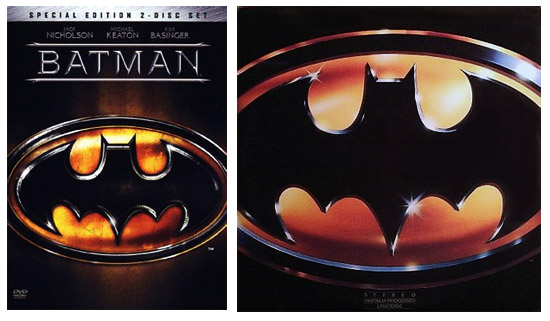
SPECIAL THANKS:
Jerry Alexander, Claude Ayakawa, Jeff Bond, Raymond Caple, Bill Gabel, Steve Kraus, Bill Kretzel, Mark Lensenmayer, Bruce Scivally, Cliff Stephenson, John Stewart, Vince Young, and a huge thank you to all of the librarians who helped with the research for this project.
IMAGES:
Copyright 1989 Warner Bros. Inc.
Westwood Village photos and premiere ticket courtesy of Bill Gabel.
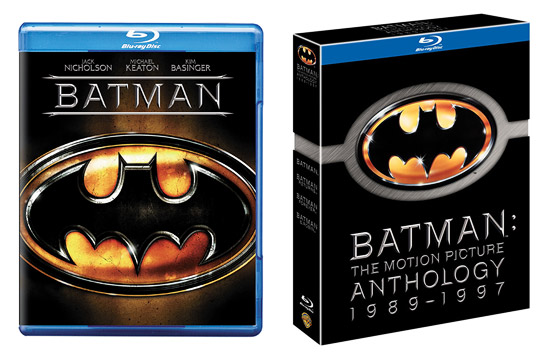
IN MEMORIAM:
- Warren Skaaren (Co-Writer), 1946-1990
- Anton Furst (Production Designer), 1944-1991
- Bill Rowe (Re-Recording Mixer), 1931-1992
- Derek Meddings (Special Visual Effects), 1931-1995
- Bob Kane (Batman creator), 1915-1998
- Ray Lovejoy (Editor), 1939-2001
- Don Sharpe (Supervising Sound Editor), 19??-2004
- William Hootkins (“Eckhardt”), 1948-2005
- Jack Palance (“Grissom”), 1919-2006
- Pat Hingle (“Commissioner Gordon”), 1924-2009
- Michael Gough (“Alfred”), 1916-2011
- Marion Dougherty (Casting), 1923-2011
- Michael Coate

